Monday Morning Update 4/14/14
Top News
The New York Times says the White House decided that Kathleen Sebelius needed to go as HHS secretary after her “wooden” appearance on “The Daily Show with Jon Stewart” in October (during which Stewart speculated openly that Sebelius was lying to him about Healthcare.gov) and the pressure she was getting from Republican members of Congress. The President waited until last week until the Healthcare.gov crisis was over to give her the hook, with the Times calling it a “slow-motion resignation.” It may be a first that a Cabinet member was forced out because of a TV show appearance and for antagonizing the other party. Even her carefully orchestrated Rose Garden farewell speech was marred by technical difficulties – she stumbled because her notes were missing a page. I don’t expect much to change with her replacement – Congress and the White House can’t keep their hands out of what HHS is doing, so the Secretary’s job is to announce big changes rather than to propose them (and to be the President’s unusually obedient lap dog in Sebelius’s case.)
Reader Comments

From Anon: “Re: Wipro. Remember how they were going to save the day with low cost IT managed services? Won a $200m contract with Catholic Health Initiatives? Big problems. They can’t even keep Microsoft Exchange running, service applications, HR system, let alone CHI’s various EHRs. Unplanned downtime is becoming a daily occurrence.” Unverified. CHI signed the deal with the India-based Wipro in March 2013, saying it expected to save $42 million over five years.

From NoPicis: “Re: Picis. Just been in a meeting where complaints were ventilated on Picis not being MU2 certified. Nobody at Picis took the time to let their customers base know about their non-compliance.” Unverified. I contacted Picis/Optum but didn’t hear back. ONC shows Picic products as being certified under 2011 criteria.
From Pokey: “Re: Cerner-Intermountain partnership. The baby has a name!” The project will be called iCentra, which is how I would picture Brits pronouncing “eye centre” based on how they spell it.
From Biller: “Re: 1500 format. On April 1, 2014, CMS has required the use of new formats to submit bills, replacing the 1500 format. Our vendor was desperately unprepared and did not have the code to make the change. And when they did, systems were crashing like cars in a sleet storm. Were the other vendors of billing systems so unprepared?” Readers: if you had this problem, leave a comment and name your vendor if you like.

From Mark: “Re: Oconee Medical Center (SC). A Paragon site, about to be absorbed by Greenville Health System, which is moving to Epic.”
HIStalk Announcements and Requests

It was political maneuvering that caused the ICD-10 delay, according to more than half of poll respondents. Anydoc had a good comment: “For sure, the lack of both provider and vendor readiness in an election year. One could easily imagine the backlash in November elections after a year of debating at nauseum the failures of Healthcare.gov compounded by providers frustrations with payment delays, lost productivity, etc. only one month before going to the polls.” New poll to your right: who is most responsible for the ACA failures like Healthcare.gov that led Kathleen Sebelius to step down?
Saturday is my grammar pet peeve day. Topping my list this week: people who write “it’s” as a possessive. Please, I know it isn’t logical, but the possessive form is “its” so just live with it, OK? Also driving me crazy: people who say “thanks but no thanks” thinking it’s cute, which requires double the number of syllables to say precisely the same thing as just “no, thanks.” OK, one more: using the word “very,” which when used often is either superfluous (“very interesting”) or incorrect (“very unique.”)
Listening: Superdrag, a decent, defunct alterna-pop band from Knoxville, TN. Not to be confused with my favorite Superchunk, which is better, non-defunct, and in fact celebrating their 25th anniversary.
I had HIStalk and the other sites migrated to a much larger server this weekend. It’s a dedicated one running a four-core Xeon processor, 16GB of DDR3 memory, a terabyte of 7,200 rpm disk, an identical second drive just for backups, MySQL databases running on a 120GB solid-state drive for extra speed, and 20TB of premium transfer. OS is CentOS Linux 64 bit and Litespeed. HIStalk keeps growing and response time was slowed at times when hundreds of readers were on at the same time, so the new server should be fast with plenty of capacity for continued growth.
Upcoming Webinars
April 16 (Wednesday) 11:00 a.m. ET. Panel Discussion: Documents, EMRs, and Healthcare Processes. Sponsored by Levi, Ray & Shoup. Presenters: Charles Harris, senior technical lead, Duke University Health System; Ron Peel, technical advisor, LRS; and John Howerter, SVP of enterprise output management, LRS. IT department in hospitals implementing EMRs often overlook the role of document-driven workflows. Prescriptions, specimen labels, and discharge orders, and other critical documents must be reliably delivered with minimal impact on IT and clinical staff. This panel discussion will discuss the evolving use of documents in the “paperless/less-paper” environment.
Acquisitions, Funding, Business, and Stock

A lifeIMAGE blog post says Nuance will enter the image sharing market in a Monday announcement that it will acquire “a small, Atlanta-based company.” I hear (unconfirmed) that company is Accelerad. KLAS ranked the company’s SeeMyRadiology.com #1 in image sharing in November 2013. It’s an odd business for Nuance to be entering, but shareholder pressure to deliver better results may have made diversification attractive for either strategic or accounting reasons even though it strays from the company’s traditional core mission of speech recognition and consumer apps (Dragon, Siri, and software for scanning and PDF editing.)

Medical cart maker Enovate Medical will expand its Murfreesboro, TN headquarters, with plans to create 410 jobs in the next five years.
People
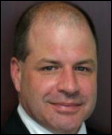
Vermont Commerce Secretary Lawrence Miller, who was tapped to rescue the state’s Vermont Health Connect health insurance exchange after a rocky rollout, is named as the governor’s point person for healthcare reform. His previous background: he founded a brewing company and ran a business that sells pewter jewelry. Meanwhile, the state auditor will investigate Vermont Health Connect and its struggles with vendors Oracle and CGI after a consultant blamed the site’s problems on politics and inexperienced leadership. Vermont has up to $170 million in federal money to spend, gave CGI a contract worth $84 million, and has paid $54 million so far for a crippled site.
Announcements and Implementations

Penn Highlands Healthcare (PA) goes live on its patient portal, or actually “portals” in the plural since the some are Cerner, some are NextGen, and others don’t appear to be from either vendor.
Government and Politics
HIMSS loves Kathleen Sebelius and any other politician who helps divert taxpayer money into HIT vendor and provider pockets, so naturally they gave her a laudatory send-off, saying “the health IT community was blessed” to have her running the department overseeing HITECH payments (and plugging its own EMR Adoption Model in its praise.) I’m suspicious of anybody who refers to a “community” without defining it or explaining how they know what that “community” thinks, especially since most members of the health IT community are citizens paying the ever-rising taxes needed to fund HITECH, Healthcare.gov, and Medicare. Personally, I’m not feeling all that blessed.
The State of Maryland threatens to sue Noridian Health Care Solutions, the $85 million prime contractor of its health insurance exchange.
Technology

April 15 is more than just tax day for nerds jealous at their peers wandering around wearing Google Glass: anybody can buy a $1,500 Glass for that day only without being part of the Explorer program. The downside: it could go into commercial production soon at a lower price and possibly with better features.
The Heartbleed bug in OpenSSL that has exposed web server information (including passwords, credit card numbers, and potentially patient information) for years on two-thirds of the world’s websites was caused by programming error that wasn’t caught by the QA review of the small, open source project, according to the German developer who identified the exploit.
Other
The American Medical Association releases a laundry list of warnings about correlating Medicare payments information to physician incomes. A subset:
- The information could contain errors and CMS doesn’t allow doctors to report inaccuracies.
- Claims filed under a given National Provider Identifier can include services rendered by residents or other healthcare professionals.
- Payments include the cost of physician-administered drugs, which are low margin for doctors.
- Physician payments are actually practice payments that must also cover practice overhead – the physician doesn’t just pocket the Medicare check.
- Medicare’s coding and billing rules vary over time and even by location.
- Doctor’s don’t make all their income from Medicare.

A JAMA editorial by Farzad Mostashari, MD and colleagues from The Brookings Institution says that each primary care physician is in essence a CEO in charge of $10 million in annual revenue, that being the overall annual healthcare spending of the average practice’s 2,000 patients. It concludes that PCPs are underused and that physician-led ACOs will work better than those run by hospitals, but that success has been limited because practices haven’t spent enough on IT or on practice transformation services. It warns PCPs that they will lose control if they just continue with business as usual or sell out to hospitals. I’ll go with that: if you want to encourage efficiency, save money, and improve health and not just episodic healthcare services delivery, the last group you’d want to talk to would be hospitals.

Cleveland Clinic, which anyone who has walked its halls can tell has always treated a cash-paying Middle Easterners, will open a 364-bed hospital in Adu Dhabi, with CEO Toby Cosgrove, MD saying, “We look at it as our petrodollars coming home to Cleveland.”
I missed this announcement from earlier this month: ECRI Institute Patient Safety Organization launches a partnership to identify and learn from health IT safety issues. Among the collaborating organizations are HIMSS, AHIMA, AMIA, ISMP, and AMDIS. Several experts serve on its advisory panel, including David Bates, MD (Brigham and Women’s), Peter Pronovost, MD, PhD (Johns Hopkins), and Dean Sittig, PhD (UT Health Science Center at Houston.)
Contacts
Mr. H, Inga, Dr. Jayne, Dr. Gregg, Lt. Dan, Dr. Travis, Lorre.
More news, HIStalk Practice, HIStalk Connect.















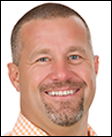




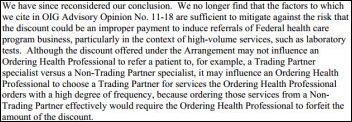













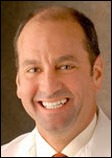




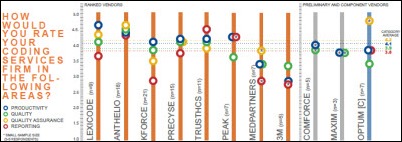
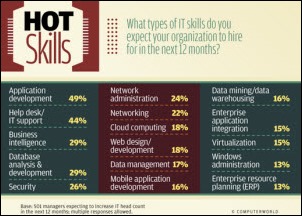












































That, or we see if Judy will announce Epic's new Aviation module (probably called Kitty Hawk) that has integrated Cruise…